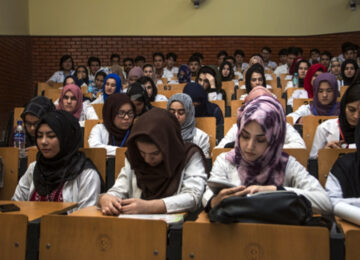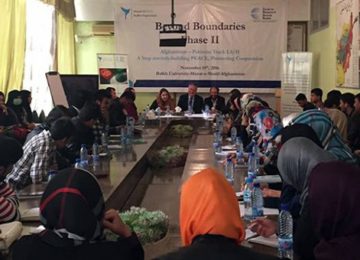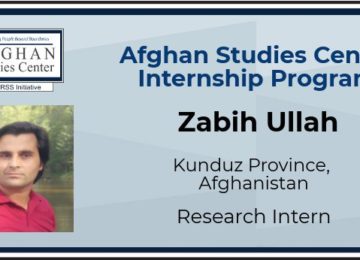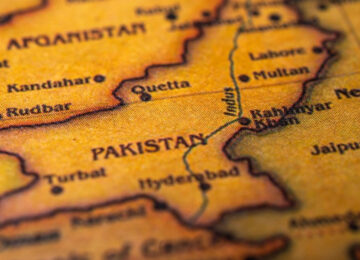It has been four decades since the communist coup in Afghanistan on April 27, 1978, which was followed by the Soviet invasion of the country in December 1979, triggering an upheaval that had bloody and disastrous consequences for Afghans as well as for the region and beyond.
Peace in Afghanistan has become a puzzle because all attempts since the Geneva Accords signed on April 1988 between Afghanistan and Pakistan, with the United States and the former Soviet Union serving as guarantors, have failed so far.
By 2001, Afghanistan’s old social and political structures, considered the bedrock of stability during the 40-year reign of King Mohammad Zaher Shah (1933-1973), were completely destroyed and the country became a pariah state facing an imminent threat of ethnic cleansing.
In addition, the traditional Afghan economy was devastated, narcotics became a major source of national income, and basic healthcare and education were absent. A majority of Afghans depended on international humanitarian aid for their subsistence and survival, and the per capita GDP in 2001 was estimated at $176. Poverty reached an unprecedented level – in geographically isolated central Afghanistan, people were forced to eat grass-like plants to survive.
However, the 9/11 terrorist attacks on the US, an unprecedented tragedy for the American people, brought salvation to the impoverished population of Afghanistan. The US-led military intervention against the Taliban regime was perceived by many Afghans as a miracle that no one had ever expected to happen.
The defeat of the Taliban regime in November 2001 gave people hope after decades of strife, suffering, and bloodshed. It looked like Afghanistan might be brought out of the vicious circle of conflict and poverty. But it was a short-lived opportunity that only lasted until 2006, when the country started sliding back into bloodshed and desperation.
Today, there is unanimity among experts that the Afghan government is in a military stalemate vis-à-vis the Taliban, and defeating them in an unconventional war, where their leadership and networks of logistical support remain out of reach in Pakistan, is extremely difficult, if not impossible.
There is a growing consensus among regional and international stakeholders in Afghanistan that the solution to end the conflict lies in a political settlement
In addition, there is a growing consensus among regional and international stakeholders in Afghanistan that the solution to end the conflict lies in a political settlement through a consensus among regional and major international powers.
Nevertheless, the latest attempt for a political solution, through a unilateral concession by President Ashraf Ghani last February, has been ignored by the Taliban. Meanwhile, they announced the start of their new spring offensive dubbed “Al-Khandaq” on April 25, which is considered a categorical rebuff to the latest peace initiative.
In addition, they have followed through on their threats by attacking government forces throughout the country and conducting horrifying terrorist attacks against civilian targets in major cities such as Kabul. Their aim is to create mass panic and thus paralyze an already dysfunctional government.
Decisions concerning war and peace are now up to the Taliban, and the Afghan government can now only shamefully try to justify its tragic failure to prevent abominable casualty rates in the Afghan security forces and among the civilian population.
In addition, US President Donald Trump’s strategy for Afghanistan, which consists of turning up the heat on the insurgents by increasing Special Forces operations and pressuring Pakistan to deny them safe heaven has not yet lured them to the negotiation table.
Meanwhile, the resolution of the conflict in Afghanistan is not limited to the goodwill of the Taliban, and there are major regional players who have a big stake in the country. Sadly, Afghanistan is caught once again in the middle of competitions between major regional powers: Pakistan versus India and Saudi Arabia versus Iran.
For instance, the presence of a large number of Afghan Shiite fighters, such as the Fatemiyoun Division, in support of Iran’s effort in Syria, and Saudi Arabia’s insistence on enrolling Afghanistan in its Sunni coalition against Iran, will make diplomatic efforts for a renewed regional consensus more challenging.
The United States and its coalition partners in Afghanistan are struggling to find a regional solution because it requires them to talk with Afghanistan’s neighbors and regional powers. This is despite the fact that the recent realignment of some regional countries opposed to NATO’s military presence and a shift in the balance of power in the region have seriously undermined the US position.
For example, the Istanbul process, also known as the “Heart of Asia,” has been perhaps the best approach for reaching an unequivocal consensus on regional cooperation for a secure and stable Afghanistan. Since the inception of this dialogue among Afghanistan’s neighbors and supporting countries in 2011, seven annual meetings have been organized but no significant progress has occurred because the process has been undermined by growing regional tensions.
In addition, the Quadrilateral Coordination Group framework, where Afghanistan and Pakistan started negotiating in 2015 in presence of the United States and China, was aborted in its initial stage.
Therefore, in the past four decades all military efforts and diplomatic initiatives have failed to pacify Afghanistan, and we Afghans are wondering what alternative could be used to end the cycle of violence in our country.
The author Haroun Mir is an analyst and researcher. This article originally appeared in Asia Times on May 2, 2018. Original link.
Disclaimer: Views expressed on this blog are not necessarily endorsed or supported by the Center for Research and Security Studies, Islamabad.








